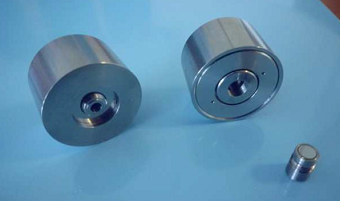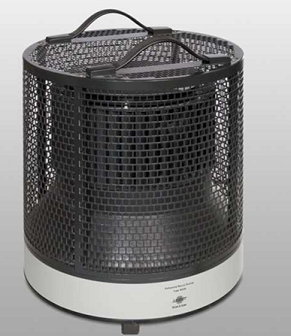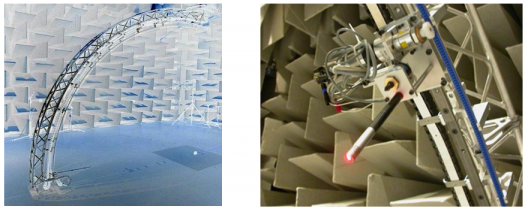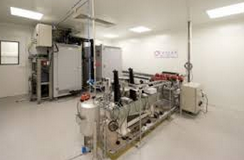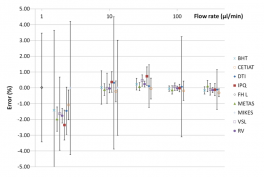Many industrial processes emit infrasound or ultrasound (wind turbines, heat pumps, ultrasonic cleaning systems, etc.). However, the mechanism for perceiving sounds outside the audible range is not currently well understood. Manufacturers and operators of installations that emit this type of sound need noise emission regulations to be well-founded and not unnecessarily restrictive: it is therefore necessary to define rational, evidence-based criteria to prevent the risks associated with these sounds.
In order to define criteria for limiting exposure and protecting the population, it is necessary to have a metrological infrastructure with reference standards, calibration methods and appropriate measuring equipment to quantify the harmful effects of ultrasound and infrasound.
OBJECTIVES
Understanding human perception of non-audible sounds.
Define the metrological structure necessary to apply safety criteria based on sound perception thresholds.
Provide traceability to national standards through the development of a universal ear simulator to model human ear impedance for both adults and children.
SUMMARY AND RESULTS
This European project comprised five technical work packages:
1 - Measurement technology for determination of brain responses to non-audible sound
2 - Measurement requirements for non-audible sound
3 - Brain response thresholds and hearing thresholds for non-audible sound
4 - Design of a wideband universal ear simulator
5 - Test and validation of the universal ear simulator and determination of reference data
LNE participated in the fourth work package, which focused on developing a tool to simulate the acoustic behaviour of the ears of newborns, children and adults. The aim was to be able to calibrate audiometers, adjust hearing aids (prostheses) and detect hearing loss from an early age.
Initially, the work consisted of establishing specifications in line with user needs, developing a design methodology to highlight the key parameters, and gathering the information necessary for this design through an extensive literature review. Based on the results of the literature review, five age groups were established: newborns, 1-3 months, 3-6 months, 3-24 months, 2-7 years, and adults.
Following completion of this initial task, ear simulators were designed for each of the five age groups. This task was accomplished using both analytical and numerical acoustic modelling.
For cost reasons, only the prototype for the newborn group was manufactured. The prototypes were qualified in parallel by four national metrology laboratories, including the LNE. This qualification mainly consisted of measuring the acoustic transfer impedance of the simulator (ratio between the input flow and the acoustic pressure on the simulator's microphone) and comparing it with that calculated by the LNE during the design phase. The results of this qualification show measurements that are well aligned with the theoretical curve over a wide frequency range, except at high frequencies (above 6 kHz).
PUBLICATIONS ET COMMUNICATIONS
BARHAM R., OLSEN E.S., RODRIGUES D., BARRERA-FIGUEROA S., SADIKOGLU E. and KARABÖCE B., “The calibration of a prototype occluded ear simulator designed for neonatal hearing assessment applications”, The Journal of the Acoustical Society of America, 2016, 140, 2, DOI: 10.1121/1.4960517.
RODRIGUES D., LAVERGNE T., OLSEN E.S., FEDTKE T., BARHAM R. and DUROCHER J., “Methodology of Designing an Occluded Ear Simulator”, Acta Acustica, 2015, 101, 5, DOI: 10.3813/AAA.918895.
RODRIGUES D., LAVERGNE T., OLSEN E.S., BARHAM R., FEDTKE T. and DUROCHER J., “Design of a new ear simulator”, Inter-Noise 2015, San Francisco, United States, 9-12 August 2015.
RODRIGUES D., LAVERGNE T., FEDKE T., SANDERMANN OLSEN E., BARHAM R. and DUROCHER J.-., “Methodology of designing an ear simulator”, Internoise 2013, Innsbruck, Austria, 15-18 September 2013.
LAVERGNE T., RODRIGUES D., NEIMANNS V., SANDERMANN OLSEN E. and BARHAM R., “Universal ear simulator: Specifications and artificial ear canal design”, Internoise 2013, Innsbruck, Austria, 15-18 September 2013.
PARTNERS
National metrology institutes:
- PTB (project coordinator),
- NPL,
- LNE,
- DFM,
- Tubitak UME,
- BKSV-DPLA.

